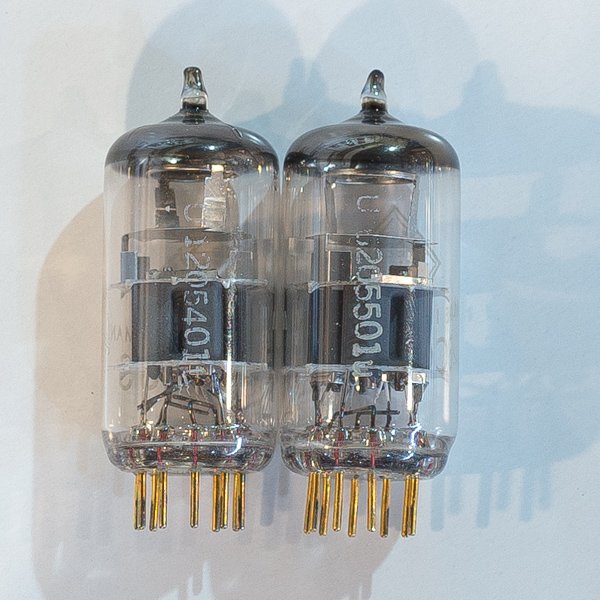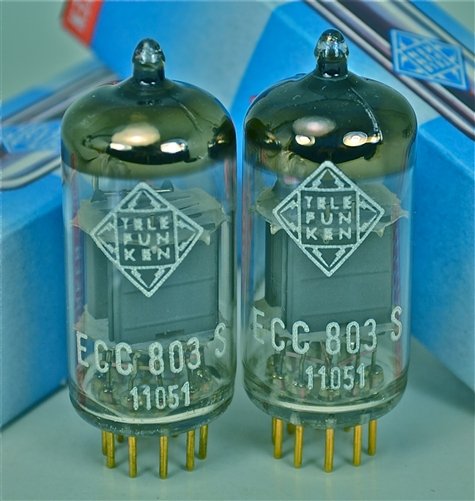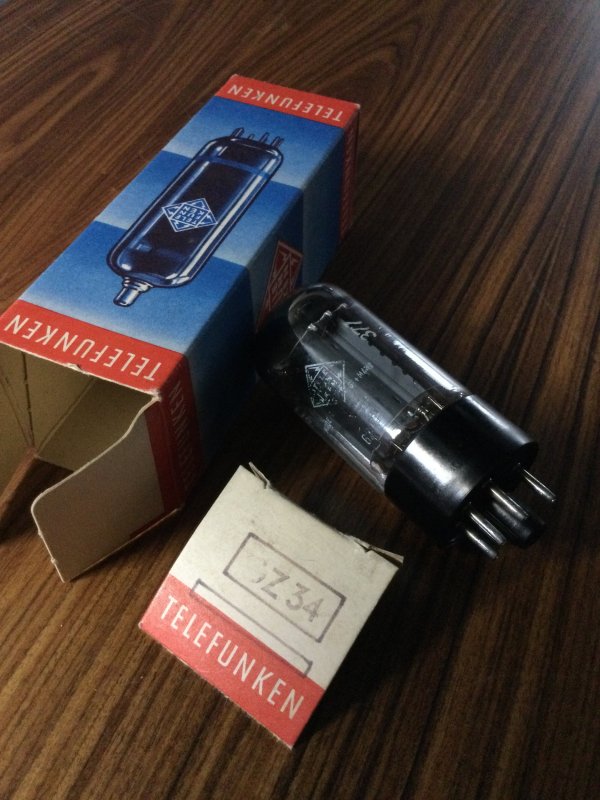Brinkmann Balance/ Kuzma 4P
- Thread starter Vienna
- Start date
You are using an out of date browser. It may not display this or other websites correctly.
You should upgrade or use an alternative browser.
You should upgrade or use an alternative browser.
@Kenc its not difficult to replace the tubes and PL36 NOS are very cheap. The rectifier 5AR4 (GZ34) is more expensive.Vienna, thanks for the amazing dive into the RoNt variants. I've never thought of rolling the PL36 tubes but I have been curious. Mine has one labelled Telefunken and another Phillips. Not sure if they are actually the same manufacture. I don't think they're too expensive.
In fact, I can't even tell how one would remove them out of their close quarters.
I have made for you a guide on the procedure to replace them:
1. Turn upside down the power supply and unscrew the four marked Allen screws only
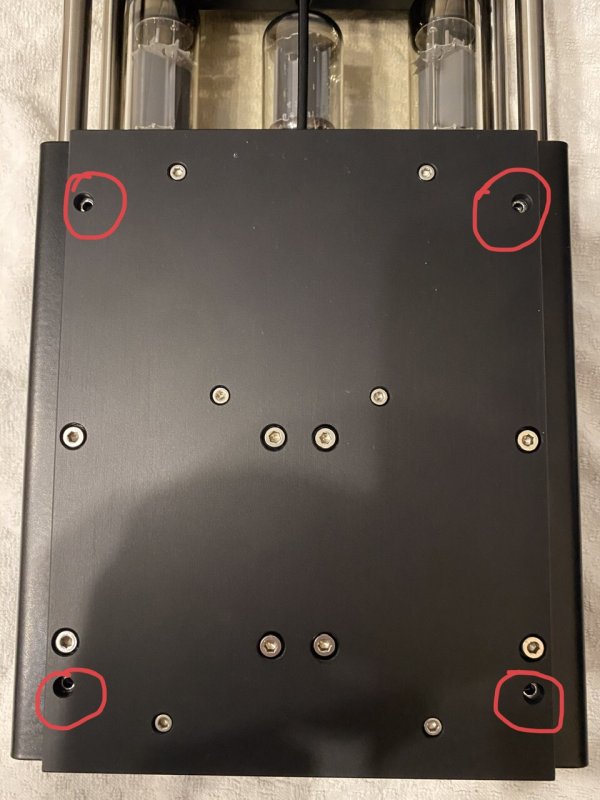
2. The side covers are now free. Remove them by sliding them away
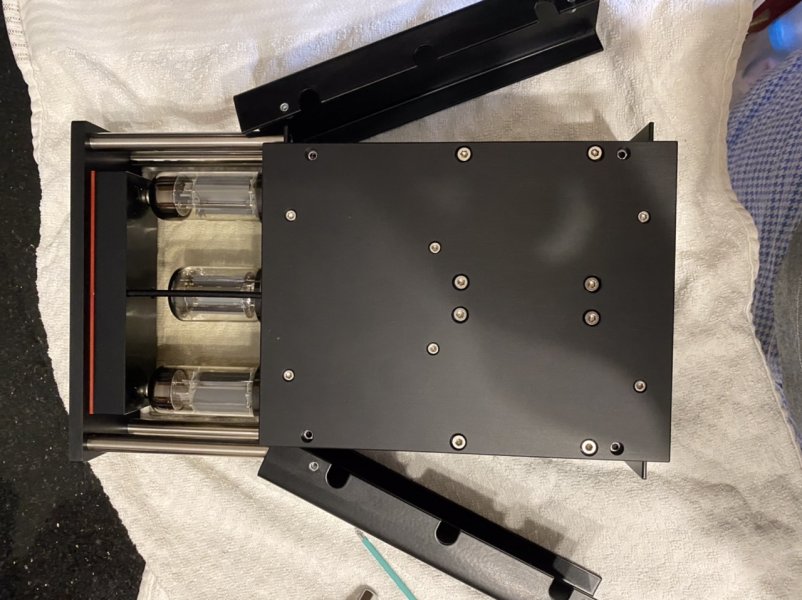
3. Turn upright the power supply again. You will see that you have access to the Allen screws which are securing the front face plate. Remove all four from both sides
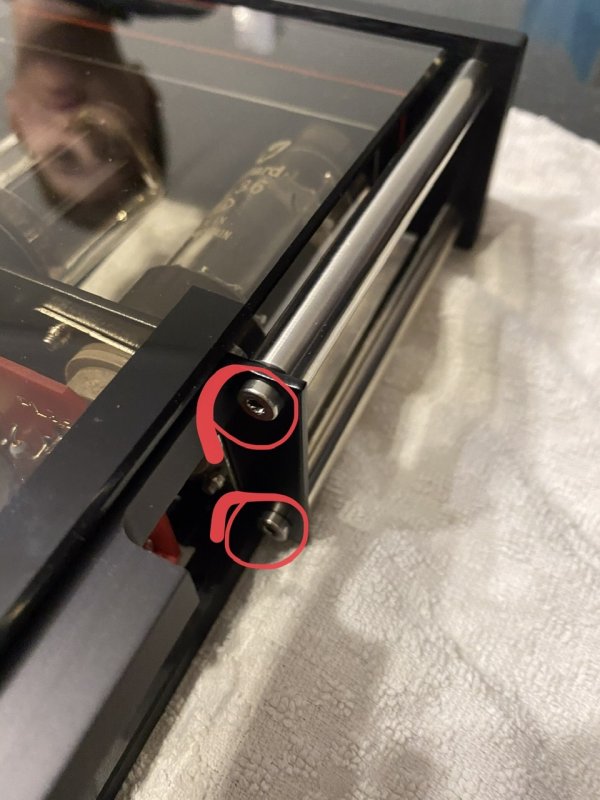
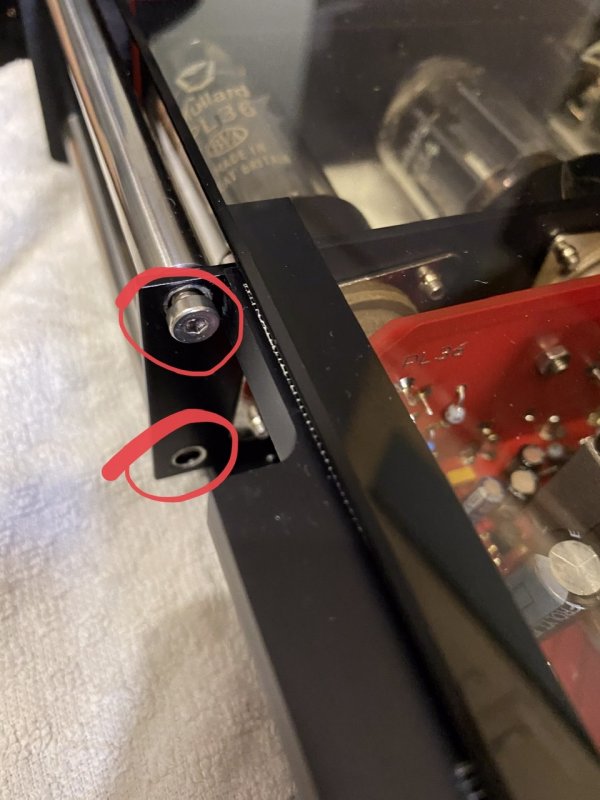
4. The front face plate is now free to be removed
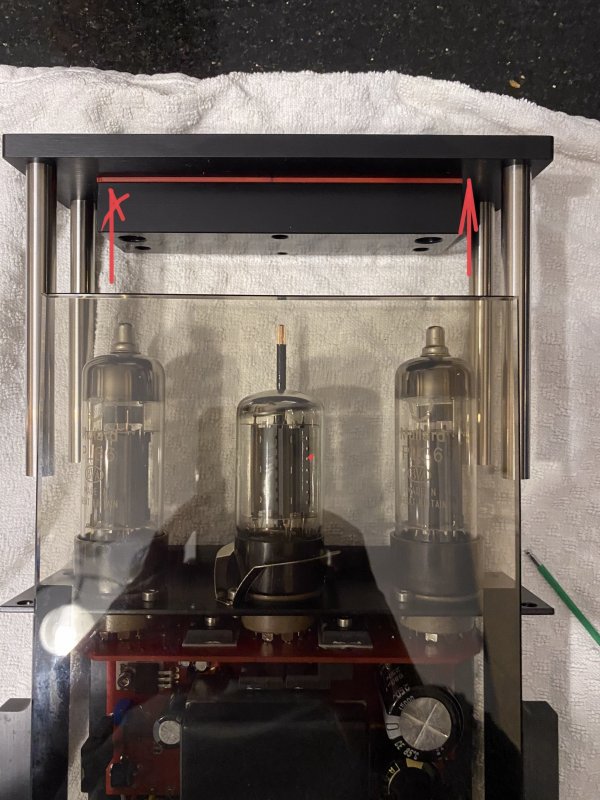
I hope that will help.
Great report! Mine is a Rotn II first generation and swapping to a Mullard GZ34 brought a great improvement. However, I had the chance to compare the Brinkmann power supply against a special DIY project based on a solid state design and the latter was much better than the Brinkmann unit. The designer has agreed to build me the unit. I just need to patiently wait.
Thank you for this beautiful report. I am fascinated by Brinkmann Audio turntables. Sorry for OT, but is there any experience with the »Taurus« turntable?
That’s just it, you keep trying to reinforce that Telefunken did not make a GZ34, I get it alright? I’m suggesting I find no evidence that Telefunken did (not) contract Mullard to manufacture GZ34s. That’s all.All Tubes made by Telefunken have a B or U on the Glass with indicates the week and year of manufacture with a 7-digit number. if the tube doesn't have it, that's an outsourced contract work.
For Exsample in Ulm made tension grid tube Ecc803s
View attachment 75200
Mullard made Ecc803s
View attachment 75199
I have plenty of Tele manufactured (with codes) examples of other tube types myself. And I’m bewildered why a Mullard style GZ34 architecture (this tube) would be relabeled to a Tele. For what possible purpose? The other aspect is I have come across more than this single tube over the years that is exactly the same. And it sounds like my Mullard labeled GZ34s. This leads me to speculate that they were made for our good German friends. Unless someone, perhaps yourself has evidence to the contrary ok and I would welcome that understanding. But otherwise, I just refuse to jump to unsubstantiated conclusions.
everything that was produced on Orginal Telefunken tubes up to 1970 is in this book. No GZ 34. I worked at Telefunken in Hanover, Germany from 1988-1992.That’s just it, you keep trying to reinforce that Telefunken did not make a GZ34, I get it alright? I’m suggesting I find no evidence that Telefunken did (not) contract Mullard to manufacture GZ34s. That’s all.
I have plenty of Tele manufactured (with codes) examples of other tube types myself. And I’m bewildered why a Mullard style GZ34 architecture (this tube) would be relabeled to a Tele. For what possible purpose? The other aspect is I have come across more than this single tube over the years that is exactly the same. And it sounds like my Mullard labeled GZ34s. This leads me to speculate that they were made for our good German friends. Unless someone, perhaps yourself has evidence to the contrary ok and I would welcome that understanding. But otherwise, I just refuse to jump to unsubstantiated conclusions.
500 sites of tube types trust me,we shouldn't argue, but enjoy the music through the beautiful tubes.
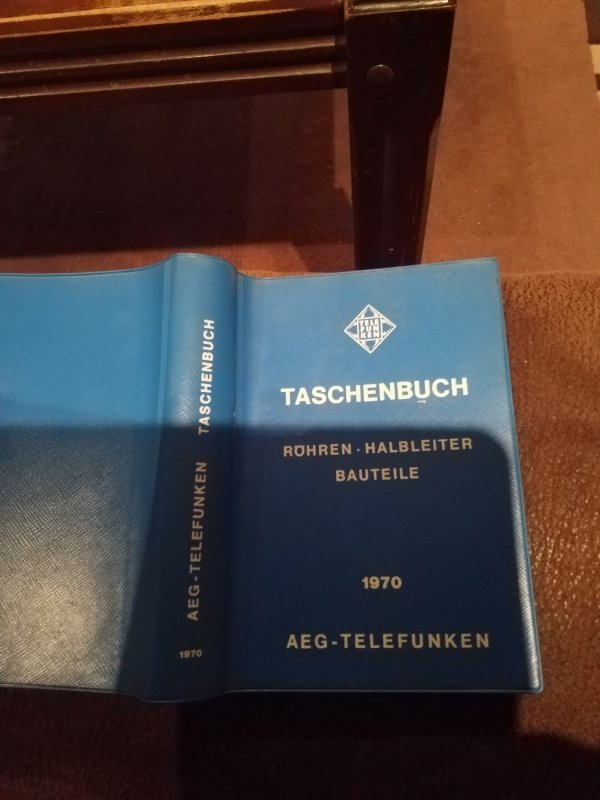

No problem with us. I appreciated what you have to bear on this subject. Truly, thank you.
You know, a lot of people say a lot of things on these audio websites, and so many of them are just repeating a piece of what they’ve heard from someone else who doesn’t necessarily have the facts right either. So I’m a little leery without understanding where the info is from.
Bottom line: who knows what that tube I have is?!
You know, a lot of people say a lot of things on these audio websites, and so many of them are just repeating a piece of what they’ve heard from someone else who doesn’t necessarily have the facts right either. So I’m a little leery without understanding where the info is from.
Bottom line: who knows what that tube I have is?!
Last edited:
I know first hand, how the turntable power supplies are affecting the sound; and how a good power supply can elevate the music in really high levels of pleasure and satisfaction. I have experimented in the past with power supplies of different types and qualities, as well as of different circuits complexities and topologies. It’s unquestionable how the motor & controller performance is influenced by the power supply quality.
Dealing with Ront II since July 2020 and especially after replacing the tubes with NOS Mullards , couldn’t think of a better match for Brinkmann Balance.
To be honest, I challenged Sinus and Ront II some time ago; and had to pay 4200 euro, plus inconvenience, backs and forths, not to mention the stress, in order to prove to myself that Brinkmann is unbeatable and superior in all levels.
My Ront II is equipped with two NOS Mullard PL36 and one NOS Mullard GZ34 (5AR4)
View attachment 75153
To be noted that the moment that I replaced the Sovtek, Telefunken and Phillips valves with all NOS Mullard, I experienced a very noticeable sound improvement. I was thinking that perhaps this improvement was due to improved speed stability. Probably the Sovtek rectifier was the weak link.
During this evaluation besides my Ront II, I had to get an early version of Ront II as well as both versions of Ront III in order to evaluate them with different rectifiers combinations.
The early produced Ront II had fell short both in comparison with the latest Ront II and Ront III in all levels (increased measured noise and vibrations as well as soundwise).
Therefore the trial shortlisted between Ront II (version II with covered transformers) and Ront III version I and II.
View attachment 75154
View attachment 75155
I have auditioned all units with both a N.O.S. Mullard rectifier and the new BZ34.
With BZ34, both Ront II and Ront III are providing a rock solid sound with thrust and power, however this rectifier provided considerable less sense of 3-d dimensionality and spaces.
With the Mullard rectifier, the magic of the three dimensional live sound and the sense of live performance was present with this magic tube installed on both units.
I went back and forth many times as I thought that this is crazy. in my mind a rectifier is the component which converts AC power into DC power. is nothing else than just a diode which is allowing electricity to flow towards a single direction only. In addition the rectifier is away from the signal. I don’t know if it’s the V-I curve of the tube power rectifier and whether the reason is the much more rounded "knee" as compared to a solid-state rectifier or the resulted harmonics but the result is audible and unmistakable.
Ront II and Ront III are almost identical with Ront III slightly better on offering slightly less measurable noise and vibration as well as slightly better speed accuracy and stability
Between Ront III version I and version II didn’t notice an audible or measurable difference.
I am closing my evaluation on Ront III, by using Brinkmann’s statement ‘ ....Since 1985, Brinkmann’s heaviest turntable keeps on running and running and running ....with legendary quietness ....’ I would only add: ....sounding better than ever ....
Hi, why do you say: “The early produced Ront II had fell short both in comparison with the latest Ront II and Ront III in all levels (increased measured noise and vibrations as well as soundwise).” - can you elaborate on why? In another post you say that the uncovered transformers are quieter, which is how the earlier RoNT II shipped.
transformers weren’t the only difference between the earlier and later modelsHi, why do you say: “The early produced Ront II had fell short both in comparison with the latest Ront II and Ront III in all levels (increased measured noise and vibrations as well as soundwise).” - can you elaborate on why? In another post you say that the uncovered transformers are quieter, which is how the earlier RoNT II shipped.
Ok, how does one know which version they have? My RoNT II was purchased in mid 2016.transformers weren’t the only difference between the earlier and later models
a question to the balance owner which Pabstmotor is inside, type 3809 or 3909?
I can not remember.
I can not remember.
Thank you for the insight Vienna, Seems to be in the German DNA, remarkably well engineered and crafted, and so much like taking a wrench to their fine automobiles though, a bit of a time killer and pita to service?@Kenc its not difficult to replace the tubes and PL36 NOS are very cheap. The rectifier 5AR4 (GZ34) is more expensive.
I have made for you a guide on the procedure to replace them:
1. Turn upside down the power supply and unscrew the four marked Allen screws only
View attachment 75201
2. The side covers are now free. Remove them by sliding them away
View attachment 75202
3. Turn upright the power supply again. You will see that you have access to the Allen screws which are securing the front face plate. Remove all four from both sides
View attachment 75203View attachment 75204
4. The front face plate is now free to be removed
View attachment 75205
I hope that will help.
So I find those “Telefunken” branded GZ34 tubes that look exactly like my Mullards on hand, performs identical, identical to them. Such a mystery... and even the box appears to confirm what our good friend from Telefunken has dismissed. I have to wonder if Mullard supplied these to Telefunken for rebranding. What I hold here and have tested seems unlikely to be a fake when someone could have simply sold them as Mullards...
Attachments
Yes the new RONT 3 is amazing...That is a great table, congratulations. When you get comfortable with the unit- for fun- disconnect the Ront and let it run on the SS power supply only. You will be amazed at what the tube supply contributes.
Don’t bother to try to remember ...you’ve got it completely wrong...no papst motor on Balance... only a perfectly engineered four phase motor with 500 grams perfectly balanced flywheel and true all-analogue control without any speed feedback. Helmut has abandoned mediocre motors and digitally controlled drivers long ago.a question to the balance owner which Pabstmotor is inside, type 3809 or 3909?
I can not remember.
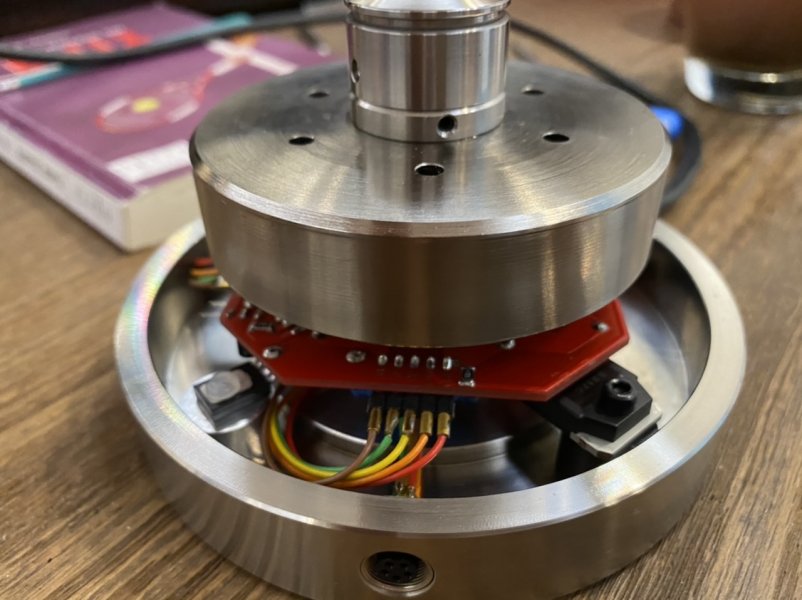
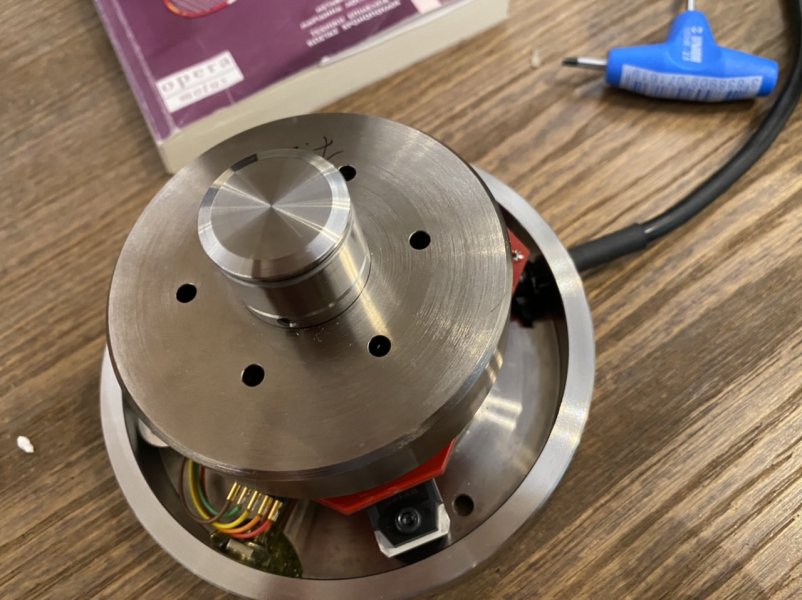
Last edited:
I always wondered where the so called super 12AX7 gold pinned 803 s came from and thought they were modern fakes.All Tubes made by Telefunken have a B or U on the Glass with indicates the week and year of manufacture with a 7-digit number. if the tube doesn't have it, that's an outsourced contract work.
For Exsample in Ulm made tension grid tube Ecc803s
View attachment 75200
Mullard made Ecc803s
View attachment 75199
david
I first encountered Brinkmann turntables at our SoCal dealer, Sunny Components, and at one of his client's homes who has a CH Precision/Brinkmann Spyder/Lyra Atlas Lambda/Stenheim 5SE system. I was paying a visit to check on the settings and set-up of the CH Precision components and the owner played a few vinyl cuts for me. Beautiful, lush, tone and wonderful detail.
I recently purchased a Brinkmann Balance/12.1 arm/RONT III. I'm running Lyra Atlas Lambda as well. This is one fabulous analog set-up! One uses BOTH the solid state power supply (to heat the bearing) and the RONT III to run the motor. It is easy to hear the improvement that the RONT III makes since you can attach the motor to the solid state supply and remove the RONT III easily. Very noticeable improvement in quieter background, soundstage, dynamics with RONT III in my system.
Many thanks to Vienna for his detailed descriptions, measurements of these power supplies and the design of the current Balance motor.
I recently purchased a Brinkmann Balance/12.1 arm/RONT III. I'm running Lyra Atlas Lambda as well. This is one fabulous analog set-up! One uses BOTH the solid state power supply (to heat the bearing) and the RONT III to run the motor. It is easy to hear the improvement that the RONT III makes since you can attach the motor to the solid state supply and remove the RONT III easily. Very noticeable improvement in quieter background, soundstage, dynamics with RONT III in my system.
Many thanks to Vienna for his detailed descriptions, measurements of these power supplies and the design of the current Balance motor.
Vienna, Love your informative posts kind sir. Very helpful to the community at large and to another very happy BB owner.Don’t bother to try to remember ...you’ve got it completely wrong...no papst motor on Balance... only a perfectly engineered four phase motor with 500 grams perfectly balanced flywheel and true all-analogue control without any speed feedback. Helmut has abandoned mediocre motors and digitally controlled drivers long ago.
View attachment 75361
View attachment 75362
Similar threads
- Replies
- 16
- Views
- 2K
- Replies
- 3
- Views
- 2K
- Replies
- 21
- Views
- 6K
- Replies
- 0
- Views
- 2K
| Steve Williams Site Founder | Site Owner | Administrator | Ron Resnick Site Owner | Administrator | Julian (The Fixer) Website Build | Marketing Managersing |






